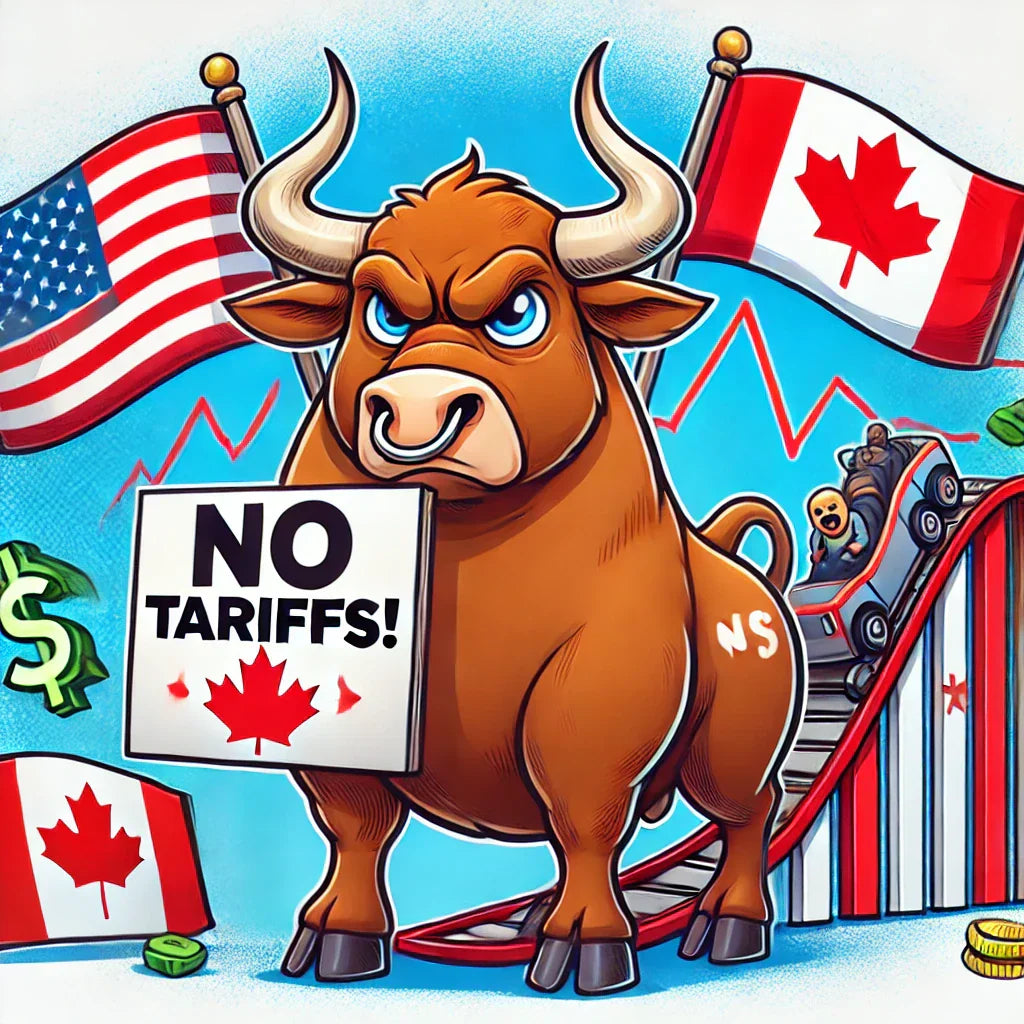
Trump Retreats on Tariffs—But the Market Has Bigger Problems
President Donald Trump just backed down from a dramatic trade war escalation that had threatened a massive increase in tariffs on Canadian steel and aluminum—not to mention new tariffs on Canadian electricity. In turn, Ontario paused surcharges on electricity to U.S. customers. Stocks were under pressure leading up to the announcement, but now the market is left wondering: Is the damage already done?
The Nasdaq has already slipped into recession territory. Could a bear market be next?
Why Tariffs Are (Probably) Bad
Sure, there's near-unanimous consensus among rock singers and Hollywood stars that tariffs have a depressing effect on economic growth and trade. They increase the cost of goods and services, hurt consumers, and—yes—they’re inflationary. Investors hate inflation because it depresses consumer spending and squeezes corporate profits through higher input costs.
Enter the Federal Reserve, which raises interest rates to combat inflation (by slowing demand). But higher rates make stocks less attractive because investors value stocks using the discounted cash flow method—higher rates mean lower future cash flow, which leads to lower stock valuations.
So, yes, tariffs are a bummer. But there’s a more fundamental problem lurking beneath the market’s recent weakness.
Stocks Are Still Expensive
Despite the recent selloff, stocks remain expensive by historical standards. The S&P 500’s current price-to-earnings (P/E) ratio is around 22x—higher than its long-term average of about 16x. The Nasdaq? Still flirting with a P/E of over 30x—a level last seen in the early 2000s dot-com bubble.
Here’s a chart showing P/E ratios over the past two decades:
 Stock Market P/E Ratios Since 2000 (Source: Yardeni Research)
Stock Market P/E Ratios Since 2000 (Source: Yardeni Research)
See the spike in 2021–2022? That was the “everything rally” fueled by pandemic stimulus. The subsequent dip? Welcome to the reality check.
The Real Threat: Valuation
Inflation and tariffs make for great headlines, but the real issue is that stocks are still expensive. Historically, markets revert to the mean over time—and with interest rates higher than they've been in decades, a return to average P/E ratios would—or at least might—mean more downside ahead.
For perspective:
- The S&P 500’s current P/E is around 22x—historical average is closer to 16x.
- The Nasdaq’s current P/E is over 30x—historical average is closer to 20x.
But Wait—There’s Good News
The recent selloff has shaved off some excess valuation. Investors were paying a premium for growth stocks—but with higher rates and global uncertainty, that premium is starting to erode.
That’s healthy. A market that trades at reasonable valuations is a market with long-term upside potential.
What to Watch
- Tariffs: Trump may have backed down this time, but the trade war drumbeat isn’t going away.
- Inflation: The Fed is still fighting inflation—another rate hike isn’t off the table.
- Valuation: Keep an eye on P/E ratios. If they fall back toward historical averages, the market may finally be approaching fair value.
Bottom Line
Tariffs are annoying. Inflation is painful. But the biggest threat to the market is the same as it’s always been: Expensive stocks.
And unless you’re a Hollywood star or a rock legend, you probably can’t afford to ignore that fact. 😎💼📉
Other articles:
Quick links
Search
Privacy Policy
Refund Policy
Shipping Policy
Terms of Service
Contact us
About us
FUNanc!al distills the fun in finance and the finance in fun, makes news personal, and helps all reach happiness.

Got a thought? A tip? A tale? We’re all ears — drop it below.: